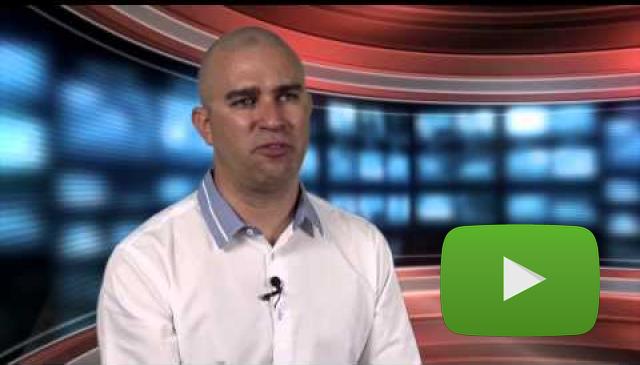AIRLINE Online Business Simulation
Educators
Pierre Benckendorff | The University of Queensland | p.benckendorff@uq.edu.au
Gui Lohmann | Griffith University | g.lohmann@griffith.edu.au
Key Features
- Simulator: AIRLINE Online Simulation
- Students: Postgraduate coursework, internal and external students
- Class Size: 20-40
- Assessment: Business proposal, annual report, reflective blog, business performance (see percentages for each institution below)
- Pedagogy: UQ - Flipped classroom (40 x 10-20 minute video lectures, 13 x 2 hour workshops); GU - Intensive delivery of lectures followed by simulation (7 x 3-hour workshops, 50 hours of simulation work).
Background
This case covers the use of the AIRLINE Online simulation using a similar pedagogic approach and assessment regime across two Queensland universities. At the University of Queensland the simulation has been used since 2011 in a masters unit. The simulation is also being used by a postgraduate unit at Griffith University, however most of the case relates to Dr. Lohmann’s use of the simulation with undergraduate students at Southern Cross University. Owned by a company called Simulate, AIRLINE Online:
‘is a management simulation based around the planning, establishment and operation of an airline…Each management team will take control of their own airline, placing each student in a position of responsibility from developing business plans, setting and adhering to budgets, fleet identification, equipment purchasing and fit out, marketing, through to analysis of financial and performance reports and evaluating their competition’ (Simulate website, 2014, www.simulate.aero)
Frank Zimmermann is the creator of AIRLINE Online which was originally developed for industry but now focuses ‘only on the academic and corporate markets’. Frank says that ‘because it was founded of an aviation background so much of it that is in there now is very specific to aviation’. He also states that is it used extensively in the United States of America and Australia in colleges and universities and for corporate training purposes.
In this case the simulation has been used with students studying tourism and aviation programs, but the simulation has also been used in business units in other parts of Australia and overseas because it focuses on different aspects of the aviation business (e.g. revenue management, marketing, maintenance). Students typically manage an airline in teams of 4-6. Both Pierre and Gui have been using AIRLINE Online for many years in stand-alone units with students having varying degrees of previous industry knowledge to be able to use the simulation effectively. ‘About 80 universities around the world also use the simulation’ says Gui, which re-enforces its industry appeal.
Learning Aims
The unit aims and objectives can be many and varied (see samples of unit outlines). Commonly, these units analyse data from a range of sources to make strategic decisions about the design, logistics and delivery of transport services. ‘Applying theory involving aviation management into a digital simulator’ is a major objective says Gui. The simulation itself focuses on operating a successful airline however different aspects of the simulation can be automated if required. For example, Pierre and Gui both automate the aviation maintenance capabilities of the simulation as it is not required for their student outcomes. However, a strong focus is on expanding the network and the profitability of the airline. It is also important that both the teaching and learning through the simulation ‘are updated to reflect the changing times’ says Pierre which Simulate can accommodate with current versions of the simulation being released.
Pedagogy
The two units follow a slightly different delivery format. At UQ the transport systems unit is delivered in a blended learning format. Students learn about the topic through a combination of online video lectures and a weekly two-hour workshop. Content is divided into four modules (air transport, surface transport, transport planning and infrastructure and distribution systems) with each module requiring three weeks of learning activities. In the first week students review online video lectures, which consist of around 3 hours of video content organized into 10 short videos. During the second week students are tested on their understanding of the video content. In the third week students are asked to apply their knowledge through practical in-class activities. Some workshop time is set aside throughout the semester to support students to learn about the simulation. This usually is more time consuming at the start of the semester. The lecturer provides students with a flow diagram that summarizes the process of establishing and airline. The first part of this process is demonstrated in class and students are then directed to the online resources provided by Simulate, which consist of a PDF user manual and online videos of various aspects of the simulation. A two-week trial period allows students to learn about the technical aspects of the simulation through trial and error. During this time students are able to apply their learning from the video lectures and Simulate tutorials directly to the simulation because each student is given an airline to establish and manage. Once the trial period ends, the simulation is reset and new airlines are established for each team to manage.
- 3 hour workshops over 7 weeks (compressed mode): Information and content delivery were disseminated during a class environment allowing the lecturer to guide students in how to use the simulation and how the theory should be used to make appropriate strategic management decisions using the simulation.
- Up to 50 hours for simulation: The simulation required an in-depth understanding of the aviation industry therefore a large amount of time is required to fully understand and implement decisions and to review the results depending on the changing macro environment conditions. Blackboard Collaborate sessions are used along the remaining weeks to support both on-campus and off-campus students.
Assessment
Students are grouped into teams to set up, manage and operate their airline. The assessment used at both universities follows a similar structure. The first assessment task is a team business proposal based on how the students aim to set up the airline according to a business model and the major goals to be achieved. This happens after they have been exposed to the simulation during the trial period. According to Pierre: ‘the trial phase helps them learn the simulation and helps them get some benchmarks and starts to get them used to some of the performance measures that they might present in their proposal’. The proposal involves a ten-minute in-class presentation and contributes 10% of the final grade for the unit. The next assessment task requires students to write an annual report based on the performance of their airline after four quarters. This task is weighted at 20% and is also a team-based assessment. A further 10% is allocated to teams based on the performance of each airline as measured by profitability, fleet size and passenger numbers at the conclusion of the simulation. Individual marks are given for a weekly 200-word journal entry where students reflect on their learning. Individual marks are also allocated using self and peer evaluations. Both units also include other assessment tasks not related to the simulation but the majority of the unit grade is based on assessment related to the simulation.
| Assessment | Responsibility | UQ | Griffith |
|---|---|---|---|
| Business Proposal Presentation | Team | 10% | 5% |
| Annual Report | Team | 20% | 20% |
| Business Performance | Team | 10% | 15% |
| Peer and Self Assessment | Individual | 5% | -- |
| Preliminary Results | Team | -- | 10% |
| Reflective Blog | Individual | 20% | 20% |
| Other non-simulation Assessment | Individual | 35% | 30% |
Resourcing
Pierre stresses that students’ ability to learn varies therefore traditional lectures and tutorials are not always appropriate. He uses video tutorials which he says are ‘very important in helping students understand how it works and to learn at their own pace’. This can also be done through Blackboard which ‘helps engage with external students’ says Gui. Pierre administers the simulation himself and uses an Administrator’s Guide provided by Simulate to set up the simulation. Gui agrees that additional support and resourcing for this simulation is minimal but has opted to allow Simulate to administer the simulation. Simulate charges a licensing fee for each simulation, which includes technical support for instructors but not students. However, the experience of both lecturers over a number of years has shown that students usually require very little technical support. The simulation requires no addition installation of maintenance and runs online through a browser window. When pop-ups are enabled, the simulation will run on PC, Mac and tablets using Internet Explorer, Firefox, Google Chrome or Safari. Most students use their own laptops and tables to run the simulation but no problems have been experienced running the simulation on shared university computers.
Outcomes
An outcome after using the simulation is the employment potential. ‘Most tourism students don’t even consider the transport sector as an employment opportunity’, says Pierre. He highlights that ‘by the end of the semester they’re switched on to that whole sector’. Gui reflects the internationalisation of the simulation which he believes ‘is more relevant at the higher education’ level. The flexibility of being able to access the simulation anywhere also appeals allowing students to focus on the task in their own time. Both agree that the student feedback about using the simulation I positive. Pierre suggests is because students get to ‘feel like we have a chance to run a real business to get some hands on experience and to apply the theory to the practice’ which makes using the simulation very enjoyable.


